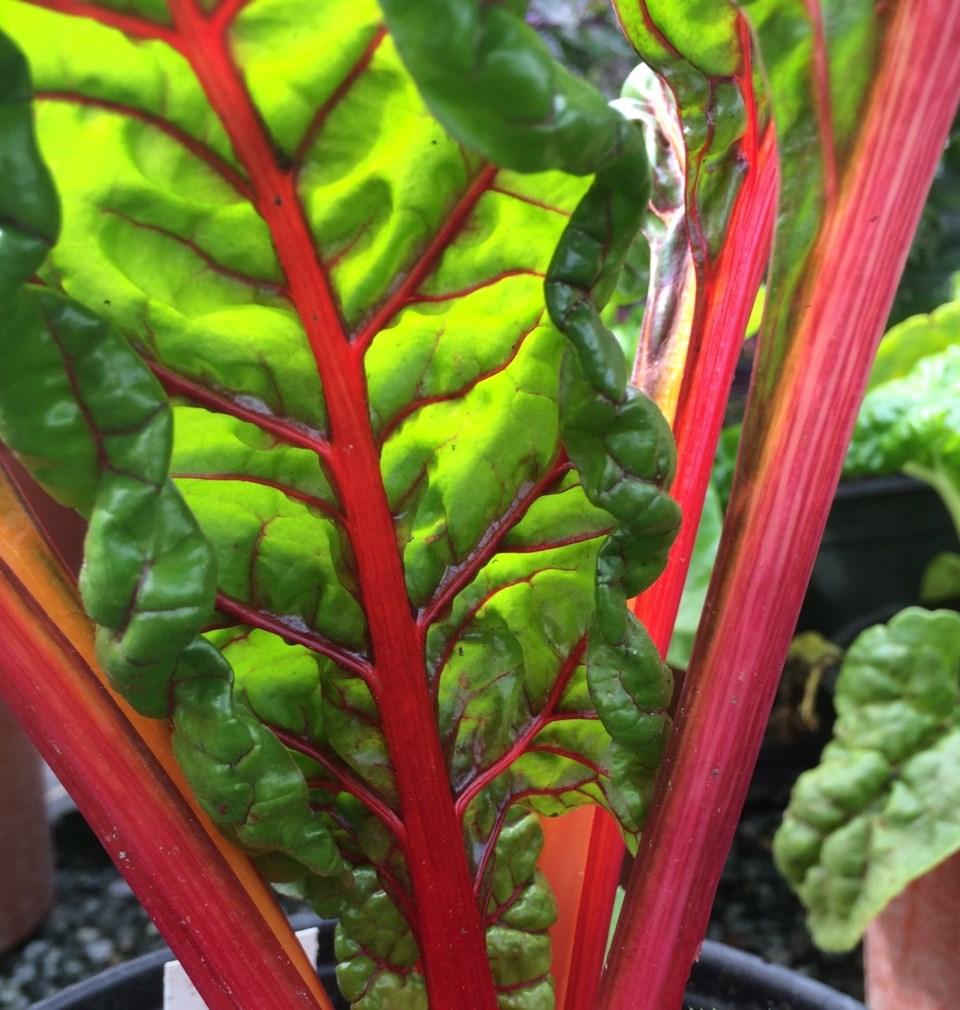The following column was submitted to the Tri-City News from Brian Minter — master gardener, best-selling author, Order of Canada recipient and co-owner of Minter Country Garden Store.
August is a very important transitional time in our vegetable gardens, especially this year.
Some vegetables are still maturing, but many others have finished completely, leaving gaps here and there that could still produce a few crops.
In the Lower Mainland and the Valley, fast crops, like lettuce, some brassicas, peas, beans, radishes, swiss chard and beets, can easily go in now, especially from started crops or transplants, for harvesting from September through next March and beyond.
In southwestern BC, our vegetable gardens can be producing twelve months a year, and even in some colder parts of the province, selective planting can be done.
Potted perennial vegetables, like horseradish, Jerusalem artichokes and rhubarb, can be planted now.
Perennial herbs like mint, parsley, chives, marjoram and oregano can also be planted for some late fall and early spring additions to your culinary dishes. September is also the best time to plant garlic for next year.
Now is the critical time to set out transplants of the true winter vegetables that can be enjoyed from late October and November through to the end of next February.
These winter hardy varieties are mostly from Europe and are bred to tolerate the wet and cold winter temperatures of zone 6 or higher. Timing is the secret to success — the sooner you get them in, the better.
So, what to grow? Here is a list of the most readily available winter varieties.
- Arugula: One of the best winter veggies, it is slow to bolt in cooler weather. It needs protection during cold spells.
- Beets: ‘Winterkeeper’ and ‘Lutz’ are the best winter varieties and have large round, very sweet roots.
- Broccoli: ‘Purple Sprouting’ and ‘Red Spear’ have small, very sweet purple heads that can be harvested in late February/March.
- Brussel Sprouts A long crop, plants must already be growing to ensure cropping.
- Cabbage: ‘Lennox’ is very winter hardy and one of the finest cabbages available. ‘Deadon’ is a red winter variety Can be harvested January through February.
- Carrots: ‘Napoli’ needs good drainage. Frosts make them even sweeter.
- Cauliflower: ‘Galleon’ has pure white heads that grow slowly in late winter for harvest in February/March.
- Corn Salad: This is one of the hardiest salad greens. It is crisp and mild and its flavour improves with frost.
- Kale: ‘Winter Bor’ and ‘Red Bor’ are truly amazing winter garden plants that will produce leaves until spring.
- Kohlrabi: An ancient relative of brassicas, its flavour improves with frosts. It is quite hardy but needs some protection in severe zone 6 cold.
- Leeks: ‘Bandit’ is one of the great winter crops, maturing slowly. Bury them deeper for more white stems. They are a treat in late winter.
- Lettuce: ‘Winter Density’ makes delicious salads all winter. ‘Rouge d’Hiver’ has beautiful, tasty red leaves. They need protection during the coldest part of winter.
- Onion: ‘Walla Walla’, one of the hardiest onions, if planted now will size up nicely for late spring harvesting. You can also rob a few for late winter soups.
- Parsnips: ‘Lancer’ and ‘Gladiator’ can still be transplanted for winter enjoyment. They become sweeter with frosts and can be harvested in late winter.
- Spinach : ‘Renegade’ is perfect for winter growing with a little protection in severe cold.
- Swiss Chard: ‘Bright Lights’ and ‘Celebration’ are very winter hardy once established. Both have amazing flavours and will beautify your garden with colourful stems.
- Turnips and Rutabagas: Once established, they are very winter hardy and their flavour improves with frosts. They will need protection in severe cold but even so, they are a great winter crop.
There are many other winter crops, but these are the mainstream varieties that folks are really beginning to appreciate. When we get some severe cold (below -10°C) a simple mulching of root crops with sawdust or bark mulch helps greatly and a new cloth cover, called ‘N-Sulate’, can make a 10°C difference in protection.
Seeds for these winter hardy varieties are widely available from West Coast Seed racks, but it is getting a little late for starting seeds.
Transplants might be a better way to go at this time of year.
Please give winter gardening at least a try this year. It’s fun and truly a great source of winter food and nutrition.




